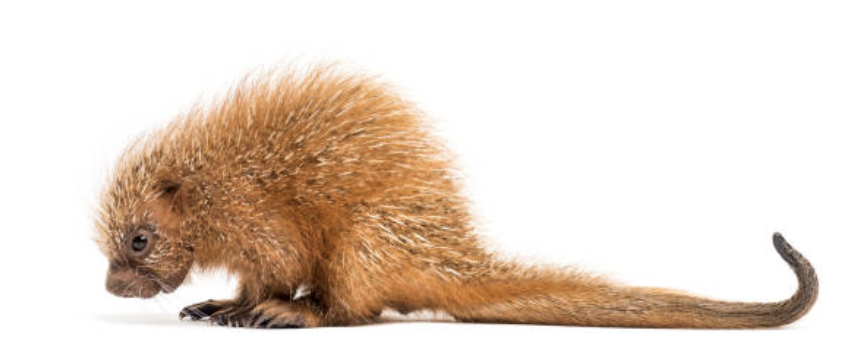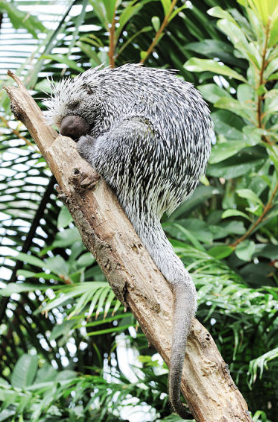Temperate Forest Biome
Temperate Forest Characteristics
Most temperate forests are comprised of deciduous (leaf-shedding) trees and are located in eastern United States, Canada, Europe, China, Japan, and parts of Russia. Deciduous forests can be broken up into five zones. The first zone is the tree stratum zone, which is the tallest trees (maples, oaks, elms) ranging 60-100ft. The second zone is the small tree and sapling zone (young maples, oaks, elms, etc). The third zone is the shrubs (mountain laurel, a variety of berry bushes, etc). The fourth zone is the herb zone for short herbal plants like ferns. The fifth zone is the ground zone (lichens, mosses, grasses).
Weather: This biomes has four changing season of winter, spring, summer, and fall. these seasons happen because of the tilt of the Earth's axis. Throughout the year, rays from the sun hit different parts of the world more directly than others, causing varying temperatures, or seasons. If the Earth were not tilted on an axis, temperatures around the globe would always be the same. Temperate deciduous forests also have quite a wet environment. Following rainforests, temperate deciduous forests are the second rainiest biome with average annual precipitation of 30-60 inches. the average temperature of this biome is 50F with summers upwards of 70F and winters often below 32F (freezing).
Biodiversity
Plants: Trees and plants in this biome have special adaptations to survive. Deciduous trees have leaves rather than pine needles. As the seasons change each year, so do the leaves. Each year deciduous trees lose their leaves, and grow them back. In the summer their broad green leaves capture sunlight and help the trees make food through photosynthesis. As temperatures cool in the fall, the chlorophyll (green pigment inside of the leaves) breaks down allowing the beautiful reds, orange, and yellow colors to show (fall foliage). In the winter these trees go dormant and since it is too cold to protect their leaves from damage due to cold temperatures they simply release them and seal up the places where the leaves attached to the brant. When the temperature begins to warm it signals to the tree to begin producing new leaves and the cycle restarts.
Animals: Animals in temperate deciduous forests have also adapted to changing seasons. Some animals, like bears, hibernate while others, like geese, migrate during the winter to escape the cold or to follow food sources. Animals who do not hibernate or migrate use special adaptations like thick fur to deal with the cold winters.
Most temperate forests are comprised of deciduous (leaf-shedding) trees and are located in eastern United States, Canada, Europe, China, Japan, and parts of Russia. Deciduous forests can be broken up into five zones. The first zone is the tree stratum zone, which is the tallest trees (maples, oaks, elms) ranging 60-100ft. The second zone is the small tree and sapling zone (young maples, oaks, elms, etc). The third zone is the shrubs (mountain laurel, a variety of berry bushes, etc). The fourth zone is the herb zone for short herbal plants like ferns. The fifth zone is the ground zone (lichens, mosses, grasses).
1 point
Shrubs, like the state flower of Connecticut (Mountain Laurel), are found in what level of a temperate deciduous forest?
Weather: This biomes has four changing season of winter, spring, summer, and fall. these seasons happen because of the tilt of the Earth's axis. Throughout the year, rays from the sun hit different parts of the world more directly than others, causing varying temperatures, or seasons. If the Earth were not tilted on an axis, temperatures around the globe would always be the same. Temperate deciduous forests also have quite a wet environment. Following rainforests, temperate deciduous forests are the second rainiest biome with average annual precipitation of 30-60 inches. the average temperature of this biome is 50F with summers upwards of 70F and winters often below 32F (freezing).
1 point
True or False: Temperate Forests experience four seasons
Biodiversity
Plants: Trees and plants in this biome have special adaptations to survive. Deciduous trees have leaves rather than pine needles. As the seasons change each year, so do the leaves. Each year deciduous trees lose their leaves, and grow them back. In the summer their broad green leaves capture sunlight and help the trees make food through photosynthesis. As temperatures cool in the fall, the chlorophyll (green pigment inside of the leaves) breaks down allowing the beautiful reds, orange, and yellow colors to show (fall foliage). In the winter these trees go dormant and since it is too cold to protect their leaves from damage due to cold temperatures they simply release them and seal up the places where the leaves attached to the brant. When the temperature begins to warm it signals to the tree to begin producing new leaves and the cycle restarts.
1 point
True or False: Cholorophyll grows in the fall, which gives deciduous trees their beautiful red, yellow, and orange fall colors.
Animals: Animals in temperate deciduous forests have also adapted to changing seasons. Some animals, like bears, hibernate while others, like geese, migrate during the winter to escape the cold or to follow food sources. Animals who do not hibernate or migrate use special adaptations like thick fur to deal with the cold winters.
Painted turtle (Chrysemys picta)
Natural Range: all around the United States
Lifespan: 25-30 years
Maximum size: 7 inches
Diet: omnivorous; fish, worms and insects, as well as vegetables and aquatic plants
Our Painted turtle: Luigi, male, estimated to be in his early teens.
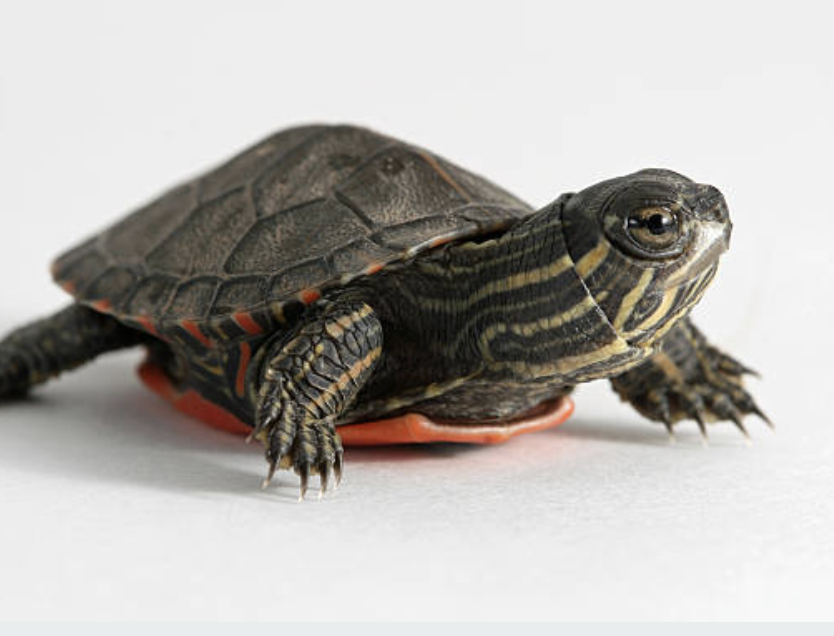
Our Painted turtle: Luigi, male, estimated to be in his early teens.

Spotted turtle (Clemmys guttata)
Natural Range: Eastern United States and parts of northern United States around Canada
Conservation Status: Endangered
lifespan: can live up to 100 years old
Maximum size: is 4-6 inches long
Diet: omnivorous, insects, crustaceans, small fish, aquatic plants and greens
Interesting Information:
The older the turtle is the more spots they have; females have an orange chin, males have a black chin
Our Spotted turtles: 3 males, 1 female. Estimated to be around 2-4 years old. Seized by the authorities from an airport in New York.
The older the turtle is the more spots they have; females have an orange chin, males have a black chin
Our Spotted turtles: 3 males, 1 female. Estimated to be around 2-4 years old. Seized by the authorities from an airport in New York.
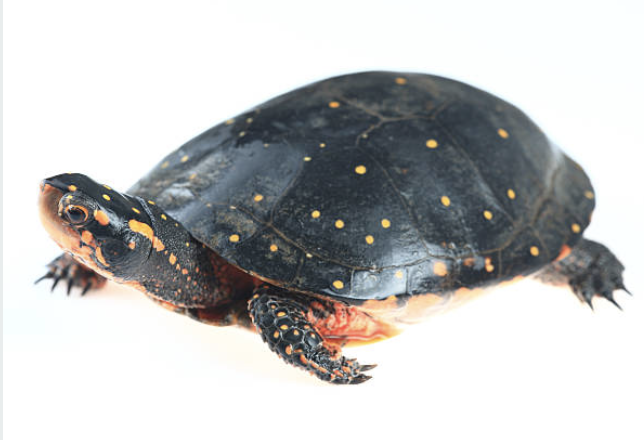
American Bullfrog (Lithobates catesbeianus)
Range: found throughout the United States
Lifespan: 7-9 years
Size: Maximum size is 6.75 inches in length
Diet: snakes, worms, insects, crustaceans, frogs, tadpoles, and aquatic eggs or fish larvae
Our American bullfrogs: Unknown genders, all about 7 years old
Our American bullfrogs: Unknown genders, all about 7 years old
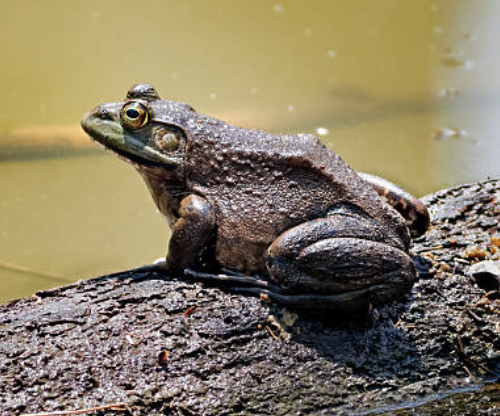
Striped skunk (Mephitis mephitis)
Physical Description: Striped skunks have an easily identifiable coloration: two thick white stripes along the back and tail sharply contrast an otherwise black coat. The specific pattern of the stripes on the head, body and tail can vary among individuals, and is accompanied by a thin, white stripe running from the snout to forehead.
Size: Striped skunk sizes vary greatly depending upon time of year and geographic location, with weights fluctuating between 1.5 and 13 pounds (0.7 to 6.3 kg), and total length varying between 18 and 32 inches (46.5 to 81.5 cm). There is a significant reduction in body mass during winter months, when striped skunks can lose up to 50 percent of their weight. Males are typically slightly larger than females.
Natural Range: Striped skunks live throughout North America from southern Canada into northern Mexico.
The most common skunks in North America, striped skunks are terrestrial animals that can survive in a variety of habitats and land types. They prefer open areas, with abundant populations observed on agricultural lands. They have been observed living in wooded areas, deserts and plains, and have even adapted to urban and suburban environments. Striped skunks are typically found at elevations below 5,900 feet (1,800 meters).
Communication: Spraying an offending creature typically occurs after a warning display, which involves the skunk stomping its feet and arching its back while raising its tail.
Food/Eating Habits: Striped skunks are omnivorous, opportunistic feeders. Their diet is primarily insectivorous during the spring and summer seasons when grasshoppers, beetles, crickets, bees and other arthropods are abundant, then switches to a carnivorous diet during colder months.Throughout the winter, they have been observed eating small mammals and ground-nesting hatchlings and eggs, and hunting amphibians, reptiles and fish. Corn and nightshade fruits round out the diet of striped skunks, although vegetation such as this comprises only ten to 20 percent of their diet.
Here, he is fed 2x daily a diet of insects, dry food, fruits and vegetables.
Social Structure: Striped skunks are solitary, typically docile animals. They often live in the abandoned dens of other mammals during the day, or take up residence in hollowed logs, brush piles or underneath buildings. They prefer underground dens in colder winter climates. While not truly hibernating, striped skunks experience extended periods of inactivity during winter.
Reproduction and Development: Male striped skunks breed with multiple females, and are rejected by the females after mating occurs. Female striped skunks typically give birth once each year, with breeding occurring between February and April. In some cases, a secondary breeding period will occur in May in the event that the first litter was lost, or pseudopregnancy occurs. Striped skunks can experience delayed implantation lasting up to 19 days. After a gestation period of 59 to 77 days, a litter of two to ten skunks is born. Young, called kits or kittens, are born helpless, with eyes opening at about 3 weeks and weaning occurring at 6 to 7 weeks.
Once they are weaned, the young skunks will follow their mother in a single file line and learn to forage and hunt. There is a high mortality rate among skunks; many do not survive beyond their first year. Young striped skunks reach sexual maturity at about 10 months.
Sleep Habits: Skunks are nocturnal.
Lifespan: The average lifespan of striped skunks in the wild is 7 years. They can live up to 10 years in human care.
Our Striped skunk: Sammy, male, estimated to have been born around May 1, 2017 in Tennessee. He was rescued as an abandoned kit. He came to the Aquarium from the Bay’s Mountain Park & Planetarium. He weighs about 7 pounds and has been de-scented.
Our Striped skunk: Sammy, male, estimated to have been born around May 1, 2017 in Tennessee. He was rescued as an abandoned kit. He came to the Aquarium from the Bay’s Mountain Park & Planetarium. He weighs about 7 pounds and has been de-scented.
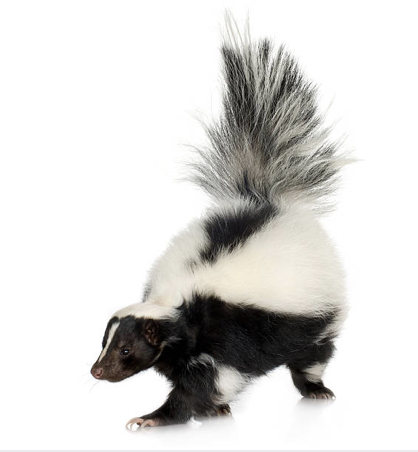
Prehensile tailed porcupine (Coendou prehensilis)
Physical Description: Prehensile-tailed porcupines have short, thick quills and their body color ranges from yellowish to almost black.
Size: They weigh from 4 to 11 pounds (2 to 5 kilograms). Their bodies are 12 to 24 inches (30 to 60 centimeters) long and their tails are almost as long as their bodies, adding another 13 to 19 inches (33 to 48 centimeters).
Natural Range: Prehensile-tailed porcupines live in the South American forests of Venezuela, Guiana, Brazil, Bolivia, Paraguay, Trinidad, and some extreme northern sections of Argentina.
Arboreal animals, they are also excellent climbers and spend the majority of their time in trees. Their ranges vary from 20 to 94 acres (8 to 38 hectares).
Communication: This species does not hesitate to attack an adversary, which it does by biting and/or sitting on its haunches to shake its quills. They will stamp their hind feet when excited and curl up to protect their soft underbelly. They can produce a variety of sounds, from moans and whines to grunts, coughs, shrieks, barks and wails.
Food/Eating Habits: Prehensile-tailed porcupines are herbivores that eat leaves, flowers, shoots, roots and the cambium layer found beneath the bark of some trees.
Her diet here consists of greens, sweet potatoes, banana, apples, rodent chow, nuts and various other fruits and vegetables.
Reproduction and Development: Females reach sexual maturity around 19 months and can continue be reproductive to up to 12 years of age. The gestation period lasts about 203 days, resulting in the birth of a single, well-developed young that usually weighs about 14 ounces (400 grams). It is born with eyes open and is able to climb. Weaning occurs at around ten weeks of age; however, the animal does not reach full size until closer to 48 weeks.
Scientists use the innovative technique of analyzing DNA extracted from a quill to determine the sex of prehensile-tailed porcupines. Porcupine sexual organs are internal—it can take up to six months before the sex is known. The DNA test identifies the baby porcupine's sex very rapidly.
Sleep Habits
These animals are nocturnal; they typically sleep during the day in the upper canopy of trees, although they have also been found resting on lower limbs and in hollow trunks and lower burrows. They are reported to move to a new tree each night.
Lifespan: Life expectancy in human care ranges from 12 to 17 years.
Our Prehensile-tailed porcupine: Sierra, female. Born February 1, 2001 at the Hogle Zoo in Utah. She arrived here in May 2018 from the Bronx Zoo. She weighs about 16 pounds.
Our Prehensile-tailed porcupine: Sierra, female. Born February 1, 2001 at the Hogle Zoo in Utah. She arrived here in May 2018 from the Bronx Zoo. She weighs about 16 pounds.
